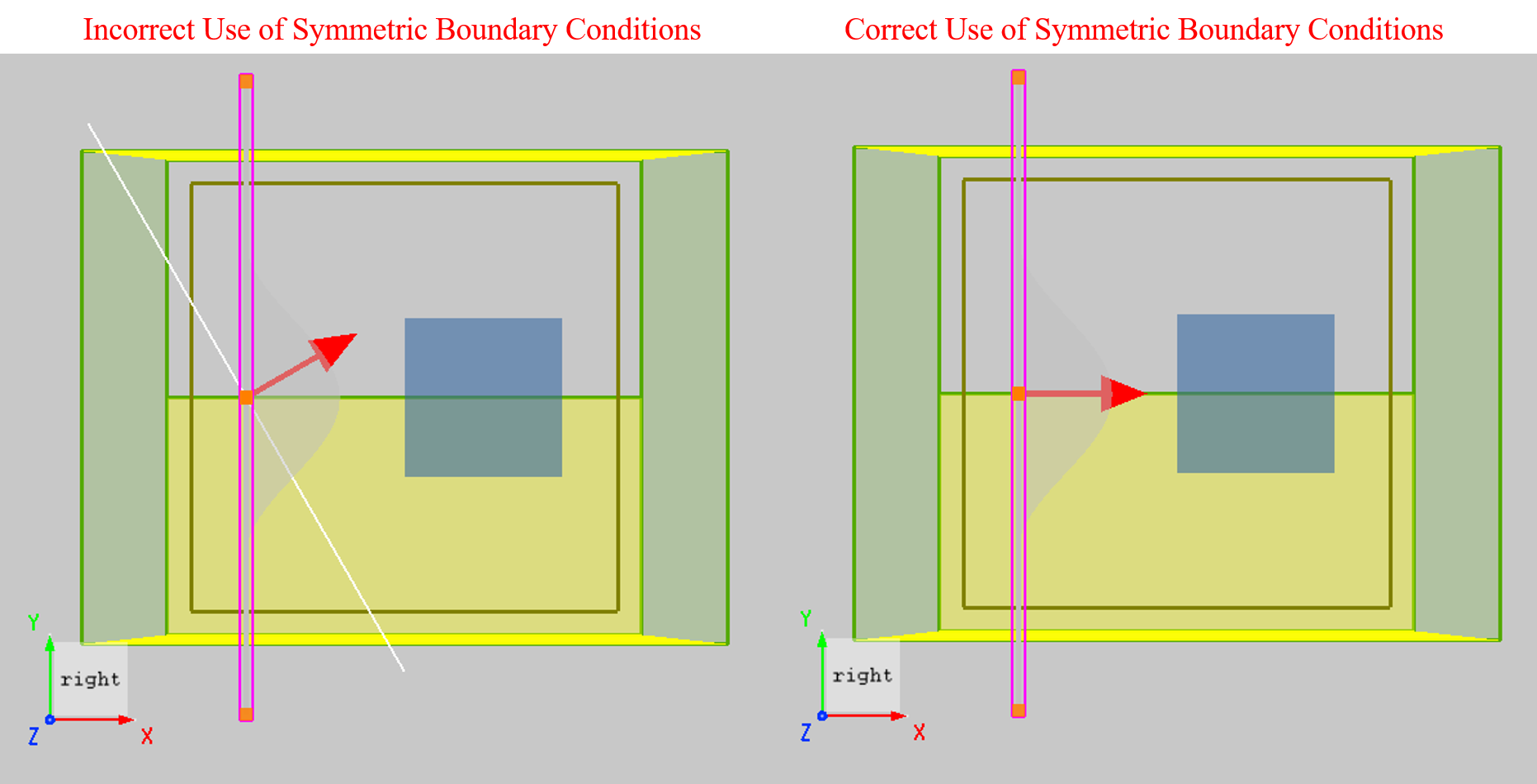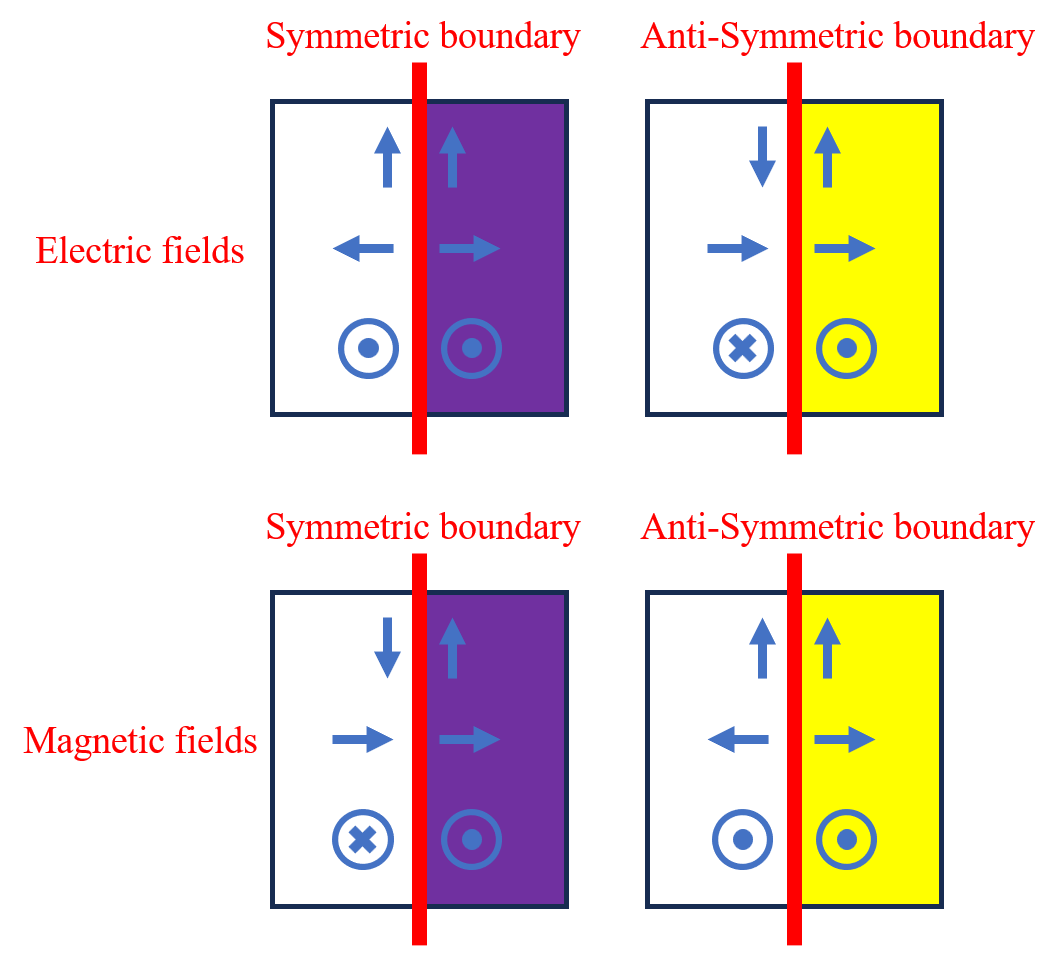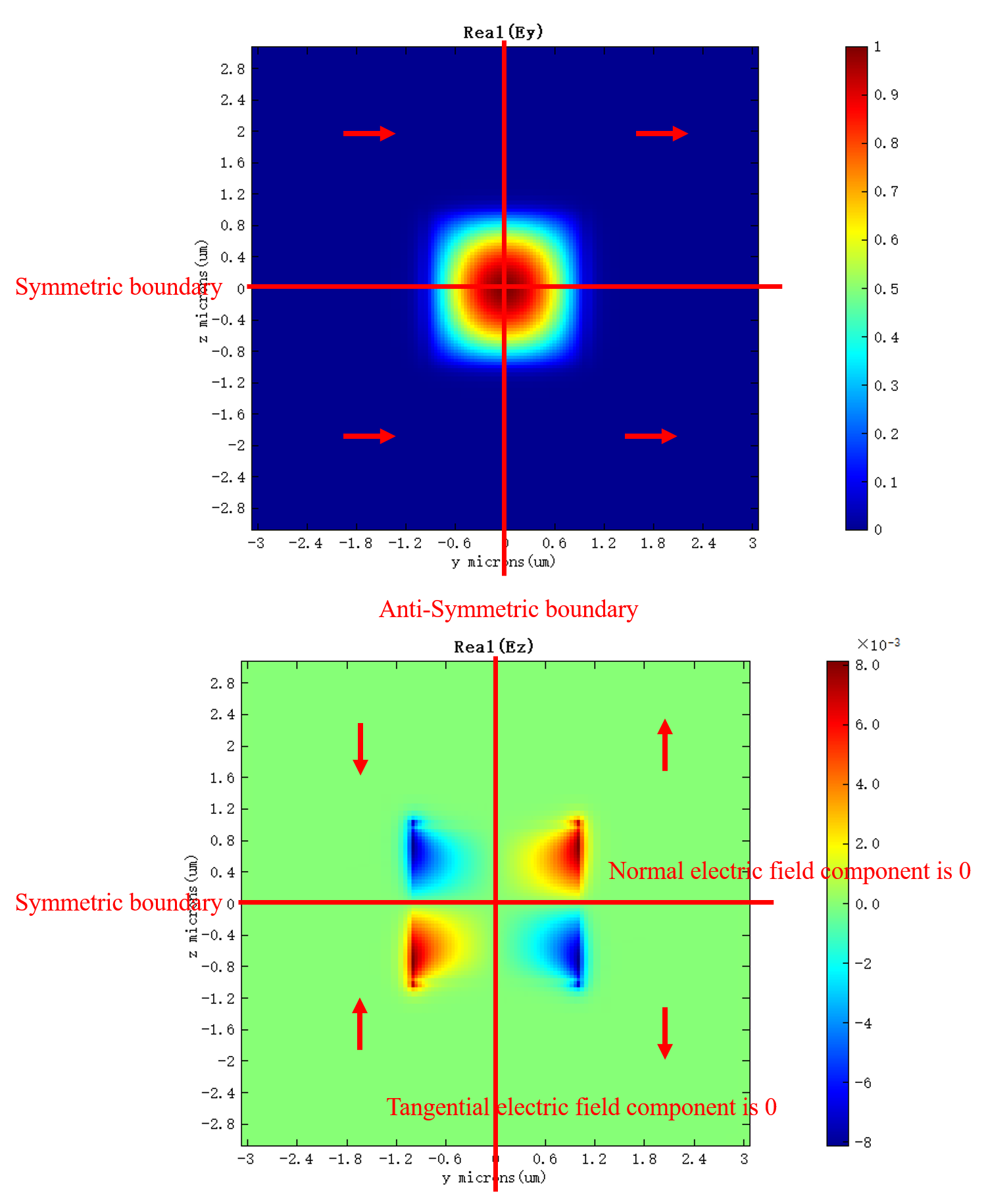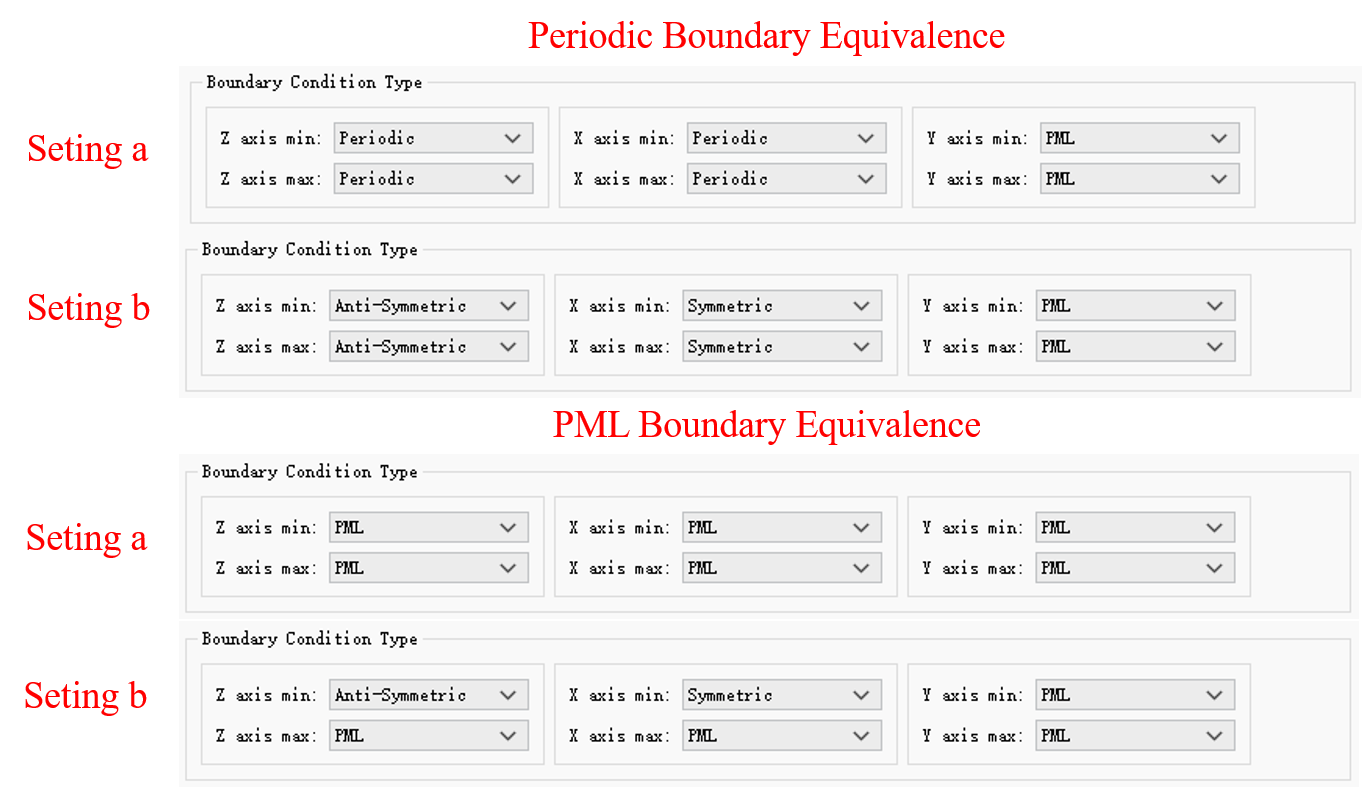Contact Number
Email
 Enterprise WeChat
Enterprise WeChat WeChat Service Account
WeChat Service Account
When setting up the solver, I want to reduce the simulation region and improve computational efficiency by setting symmetric and antisymmetric boundary conditions. However, I am uncertain about when these boundary conditions can be used and how to configure them correctly.
When using symmetric boundary conditions, users must accurately understand the following two aspects:
1. Applicable Scenarios:
Symmetric boundary conditions are mainly used to save computational resources, reduce memory usage, and accelerate simulation. To use them, both the physical structure (geometry and materials) and the field distribution of the light source must be symmetric. As shown in the figure below, if the light source is obliquely incident, the symmetry requirement is not met and symmetric boundary conditions cannot be used; if the incidence is normal and the field distribution is symmetric about the symmetry plane, then symmetric boundaries can be applied. Proper use of symmetry can halve the computational domain in each direction, significantly improving simulation efficiency.

2. Implementation Principle:
Symmetric/anti-symmetric boundary conditions are implemented by forcing specific field components to zero on the symmetry plane in Maxwell's equations. The table below lists the field components set to zero for each type of boundary condition. During simulation setup, only the source field components on the symmetry plane that are not forced to zero need to be considered. These correspond to the components not listed in the table below.
| Symmetric Boundary Condition | Anti-Symmetric Boundary Condition | |
|---|---|---|
| Normal Electric Field Component | 0 | |
| Tangential Electric Field Component | 0 | |
| Normal Magnetic Field Component | 0 | |
| Tangential Magnetic Field Component | 0 |
When using symmetric/anti-symmetric boundary conditions, users may easily select the wrong boundary type. If the wrong type is chosen, the system will not issue a warning, but the simulation results will be significantly incorrect. To verify correctness, first run a simulation without symmetry boundaries, then compare the results with those using symmetry boundaries. If the results are consistent, the settings are correct; otherwise, there may be a configuration error.
Symmetric/anti-symmetric boundary conditions are designed to enhance computational efficiency for simulations with symmetric structures, representing an advanced feature of the software. For proper implementation guidelines, refer to the following key points. Should questions persist, contact our technical support.
1. Symmetric boundary conditions follow specific symmetry rules. The electromagnetic field distribution under different symmetry boundary conditions follows these distribution rules. For details, see Symmetric/Antisymmetric Boundaries.

The above rules are particularly useful for mode source solver and cavity resonance mode analysis. As shown in the figure below, the component (positive y-axis direction: right) is positive in all parts; the component has opposite signs in adjacent parts. Based on the above rules, it can be determined that there is an anti-symmetric plane at Y=0 and a symmetric plane at Z=0. Therefore, the y min boundary can be set as an anti-symmetric boundary condition, and the z min boundary can be set as a symmetric boundary condition.

2. Configuring different symmetry boundary conditions at min/max boundaries in x/y/z directions produces distinct effects. When applying symmetry condition at one boundary, it equivalently implements the opposite boundary condition while halving the simulation domain. When applying identical symmetry conditions at both boundaries in one direction, it equivalently functions as periodic boundary conditions (infinite simulation periods in space).
As configured in the figure below, settings a and b are equivalent. Note that whether to use a symmetric or anti-symmetric boundary in a direction should be determined based on the distribution of the electromagnetic field of the source at the symmetry plane.

Both substitution methods reduce the computational domain to 1/4 of its original size.
Note: The min and max boundaries along the same axis cannot be set as different types of symmetry boundary conditions simultaneously.
In addition to the above rules, users should note the following when applying symmetry boundary conditions: